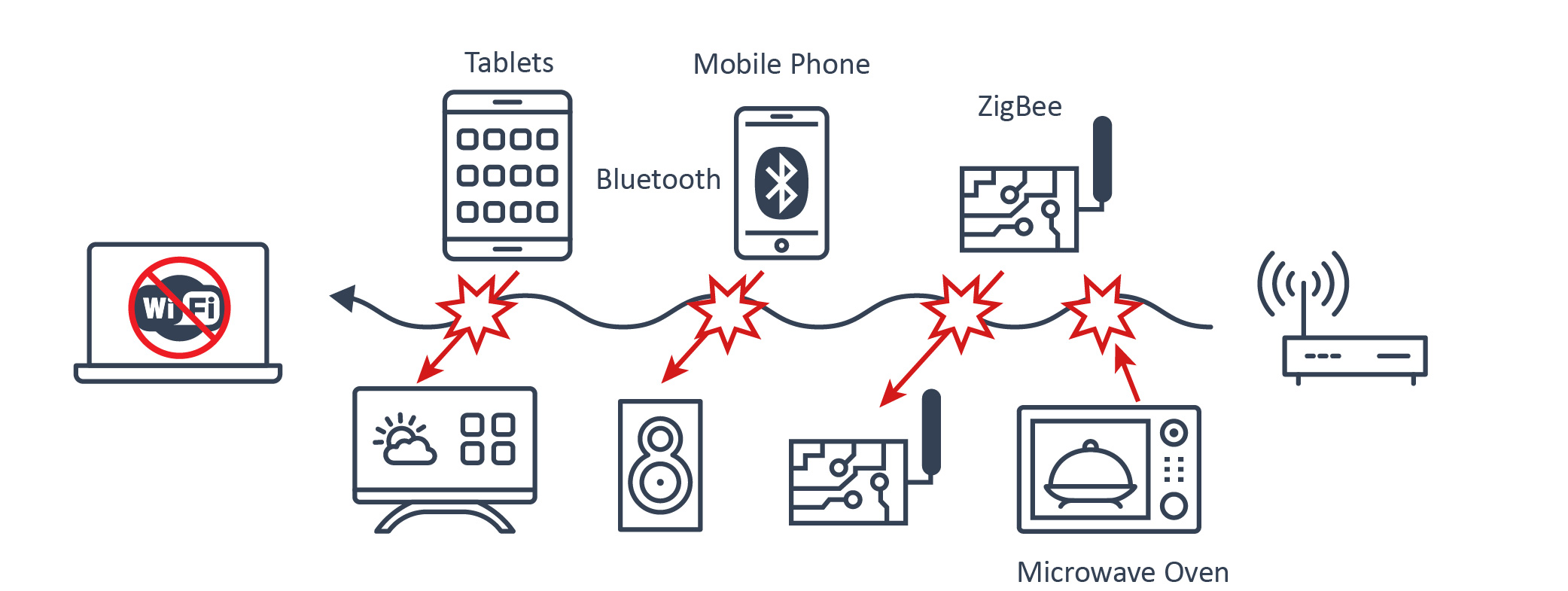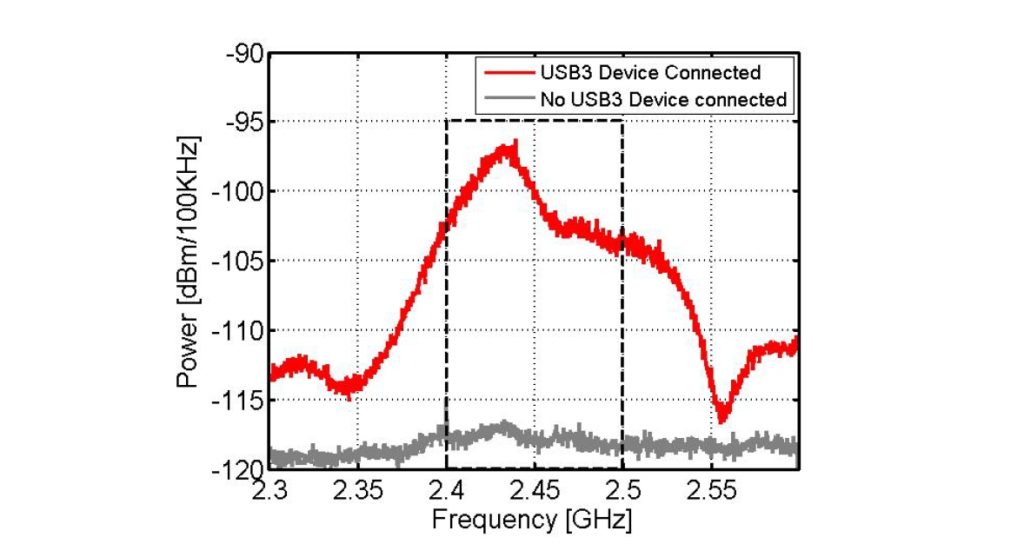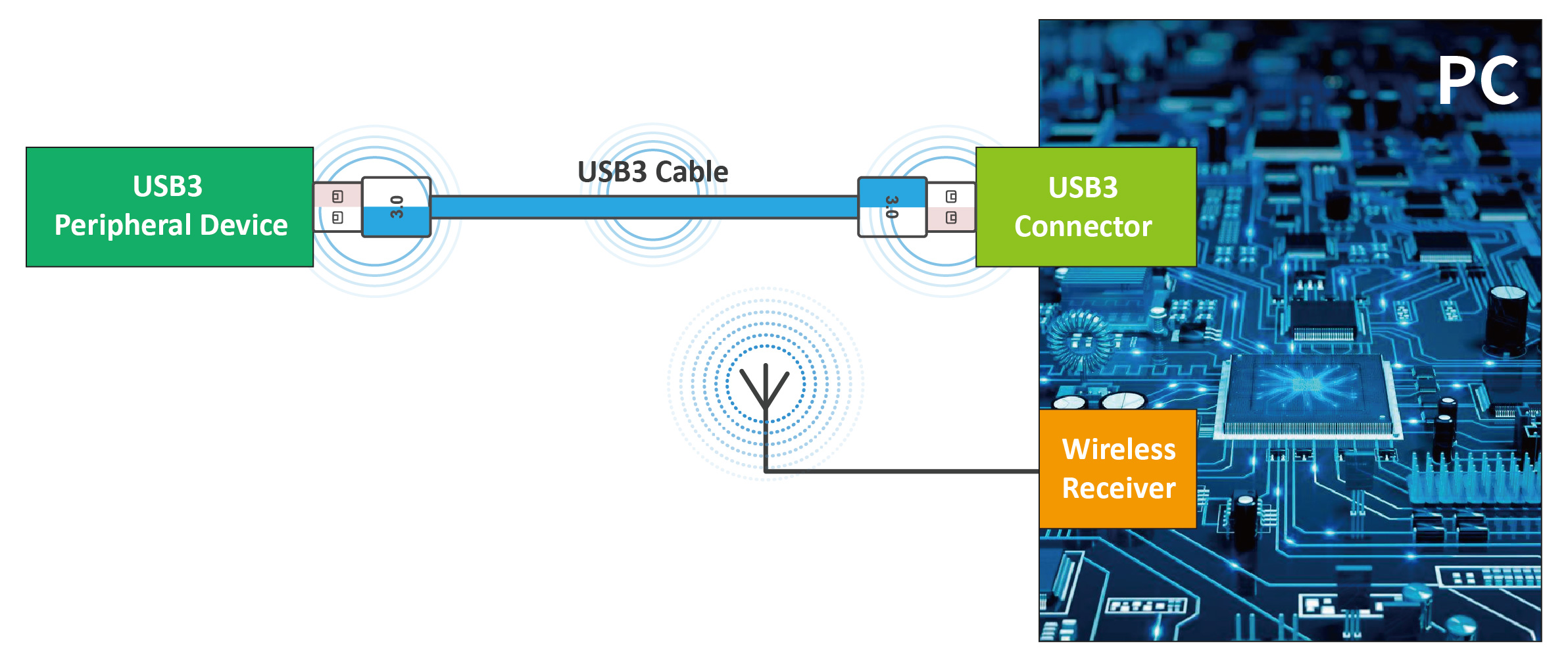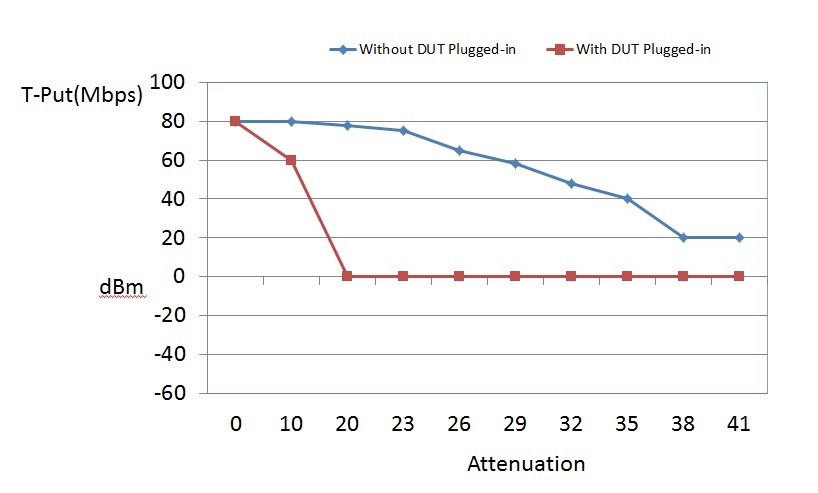Allion Labs / Jim Wang
The rapid growth and the pervasive uses of wireless communication technologies (e.g. 5G, W-Fi, and Bluetooth®) makes our lives easier, but also brings various wireless signal interference issues. One of the common RF interference issues is caused by De-sense, which we want to discuss today.

Since manufacturers make devices lighter and thinner, the radiated interference was easily caused by components will lower signal-to-noise ratio and wireless throughput in a tiny space. The common Wireless De-sense issue occurs when connecting a USB 3.1 Device (e.g. USB Dongle) to a System (e.g. laptop). That’s why we hear that a few Mac users complain their Mac systems get weak Wi-Fi signal or disconnecting Wi-Fi when connecting a USB-C Docking.
Let’s elaborate more about De-sense issues. As the below illustration shows, the average noise level (with the condition that a USB3 device is connected) is 20 dBm higher than the level (with the condition that a USB3 device is not connected.) It demonstrates the interference is easily generated between the high-speed transmission interface and Wi-Fi (or Bluetooth®) 2.4 GHz signal, when connecting USB3 device to the system.

Reference Source: Intel Document: 327216-001 P.10
The signal interference of USB3.1 may generate from the connector, the cable or the device itself. The distance between Wi-Fi antenna and the signal radiation of USB3.1 will determine how serious interference is. The closer the distance is, the more serious the interference is, the higher possibility that the system’s wireless receiver sensitivity would be affected. It eventually turns to poor wireless network quality.

Reference Source: Intel Document: 327216-001 P.9
In order to solve USB 3.1 wireless interference issues, Allion has proposed the Wireless De-sense testing solution. No matter your product is a system, a USB accessory or a Bluetooth® accessory, our RF Testing lab could help you ensure the quality, and further establish a good reputation in the industry. Now, we are going to share the test case studies with you.
Allion Wireless Desense Test
Test Purpose
To verify the dense won’t downgrade the laptop performance when plugging the USB-C device.
Test Equipment and Configuration
To avoid interference caused by by other factors, the test bed, the digital attenuator and the AP are placed in the individual shielding room or shielding box.

Wireless Desense Case Study
Test Purpose

- Measure Wi-Fi Tx and Rx throughput difference between the laptop with and without a USB 3.1 dongle
- Confirm the W-Fi throughput drop rate (the throughput difference) falls below the standard range. Once the drop rate meets the testing standard spec, it can ensure that users will enjoy stable wireless performance of a laptop when connecting to a USB dongle.
Test Criteria
- Test each USB-C ports of the system (laptop)
- The laptop’s Wi-Fi throughput when plugging a USB device should be better than that throughput when unplugging a USB device
- There are 3 different signal levels. The throughput of the strong RSSI level should be better than that of the weak RSSI level.
- The testing standard for Wi-Fi throughput drop rate is listed as below:
Test Standard for Throughput Drop Rate
| Level | Signal Level | RSSI | Throughput Drop Rate |
| 1 | Strong | – 45 ~ – 50 dB | < -5% |
| 2 | Medium | – 68 ~ – 72 dB | < -5% |
| 3 | Weak | – 78 ~ – 81 dB | < -10% |
Passed Test Cases
| USB Port | Signal | No Plug in Dongle (Tx) | Plug in Dongle (Tx) | Throughput Drop Rate | |
| RSSI | Throughput | Throughput | |||
| Channel 6 Port 0 | Strong | 45 | 121 | 121 | 0.00% |
| Medium | 69 | 84.6 | 80.8 | -4.49% | |
| Weak | 80 | 31.7 | 29.1 | -8.2% | |
| Channel 6 Port 1 | Strong | 46 | 121 | 120 | -0.83% |
| Medium | 68 | 83 | 80.8 | -2.65% | |
| Weak | 81 | 32.9 | 30.3 | -7.9% | |
Failed Test Cases
| USB Port | Signal | No Plug in Dongle (Tx) | Plug in Dongle (Tx) | Throughput Drop Rate | |
| RSSI | Throughput | Throughput | |||
| Channel 6 Port 0 | Strong | 48 | 120 | 112 | -6.67% |
| Medium | 70 | 60.8 | 51.1 | -15.95% | |
| Weak | 79 | 2639 | 20.1 | -25.28% | |
| Channel 6 Port 1 | Strong | 49 | 120 | 117 | -2.50% |
| Medium | 69 | 60.7 | 58.5 | -3.62% | |
| Weak | 80 | 24.9 | 15.3 | -38.5% | |
Test Purpose
Test that whether the Bluetooth® HID device can work smoothly or not when plugging the USB-C device in the laptop.
Test Criteria
Users could easily type buttons on the tested Bluetooth® Keyboard or move the tested Bluetooth® Mouse smoothly without lagging when plugging the USB-C device. DUTs would be tested under three conditions with different signal levels.
| Level | Signal Level | RSSI |
| 1 | Strong | – 45 ~ – 50 dB |
| 2 | Medium | – 68 ~ – 72 dB |
| 3 | Weak | – 78 ~ – 81 dB |
Test Purpose
Test the Bluetooth® speaker could smoothly playback audio from the Youtube 4K video on the laptop when plugging the USB-C device.
Test Criteria
Users could smoothly playback audio from the Youtube 4K video on the laptop without lagging when plugging the USB-C device. DUTs would be tested under the three conditions with different signal levels.
| Level | Signal Level | RSSI |
| 1 | Strong | – 45 ~ – 50 dB |
| 2 | Medium | – 68 ~ – 72 dB |
| 3 | Weak | – 78 ~ – 81 dB |
Summary
Wireless De-sense issues occurs in our daily lives. Any component works at similar frequency might cause RF interference and downgrade the wireless performance. To reduce potential risks of RF interference, all the interfaces or components, such as HDMI, touch panels, camera modules, or SSDs, wireless modules (e.g. Wi-Fi, Bluetooth® and GPS) need to be placed in the right area by measuring and calculating accurately in the tiny product space.
Further, vendors would also need Allion’s Wireless Dense Testing Solution to ensure the wireless quality through a series of rigorous tests. Currently, the Wireless De-sense testing has also been included in Allion’s new launched “Mac Accessory QA Program,” aiming to help Mac accessory vendors find out the critical issues and ensure the accessory device could works perfectly with Mac systems. Once the Mac accessory passing the QA program, vendor will receive Allion’s test certificate, one of Apple’s pre-requests to get into Mac Store, also a high quality proof for product or channel marketing. Wanna know more about our De-sense testing or our Mac Accessory QA Program!? Contact at Allion!






































